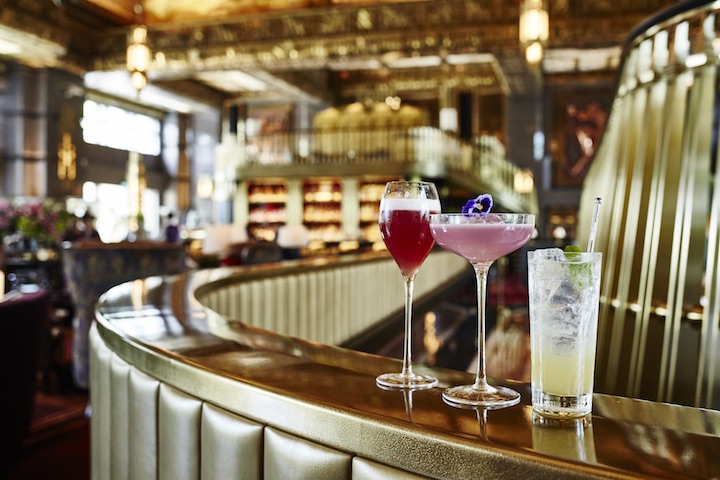ON TREND: FANCY MOCKTAILS ARE THE LATEST COCKTAIL TO HAVE IN BARS
Earlier this year, we spotted a new trend taking shape in more bars around the world — mocktail mixology.
It's a movement that indubitably raises many an eyebrow when first mentioned. After all, the sickeningly sweet aftertaste of a Shirley Temple is hard to forget. But with more bartenders turning their attention to mocktail craft, those days of sipping on syrupy concoctions in a bar could soon be a thing of the past.
Over at Atlas Bar, housed in the grand Gotham-like building along North Bridge Road, head bartender Roman Foltan is mixing up mocktails that take some serious work.
Formerly from Artesian bar in London, UK, Foltan is no stranger to the progressive-style of making cocktails and coming up with innovative new drinks. At Atlas Bar, there are no local ingredients such as durians or mangosteens in the drinks; the swanky 1920s-style bar instead uses only ingredients imported from Europe.
But this means produce such as edible flowers and teas that he turns into syrups without that artificial sweetness. Even the ice cubes used in the mocktails here are chipped into perfect squares from crystal-clear blocks of ice. We speak to the barman to find out more.
Why did you decide to put so much thought into creating mocktails?
We believe if you can create a delicious vegetarian dish, there has to be a way to make a similar drink where you don’t need alcohol as a base to make something delicious. When people ask for non-alcoholic options in a bar, it used to be that they would be served either a juice or a drink that ends up very very sweet.
Nowadays, people ask for mocktails for many different reasons — they could be driving, or pregnant, but still want to enjoy a night out. Then, there's also those that entertain nearly everyday of the week and they need a break from all that alcohol. It's more about a healthy lifestyle and how do we as bartenders provide low to no-alcohol options increasingly.
Cocktails have a fuller body and a natural kick thanks to its alcohol content. How do you make up for the lack of that body in mocktails?
Making a good mocktail is actually more challenging than doing a cocktail! If there’s no alcohol used, the actual cordial (syrup) becomes the base of the drink because it carries the main flavour. Mimicking the sharpness and warmth of alcohol is about the intensity of the cordial you use; you’re never going to achieve the sharpness of the alcohol, so you have to up the intensity of the cordial and flavour profile.
Take recreating a classic gin and tonic in mocktail form. First, we look closely at the DNA of gin as a spirit — to copy the juniper-berry driven profile, we boil water with juniper berries and cardamom, coriander seeds and leave it to steep. Then we play around with the portion of juniper berries used and add herbs and spices like fresh rosemary and boiled bark (the same one used in gin), as well as cardamom and coriander seeds. Once the cordial is intense enough, it will be a close copy of gin, and we add sparkling tonic water and stir it up.
This article was adapted from an orignal feature in Michelin Guide Singapore
